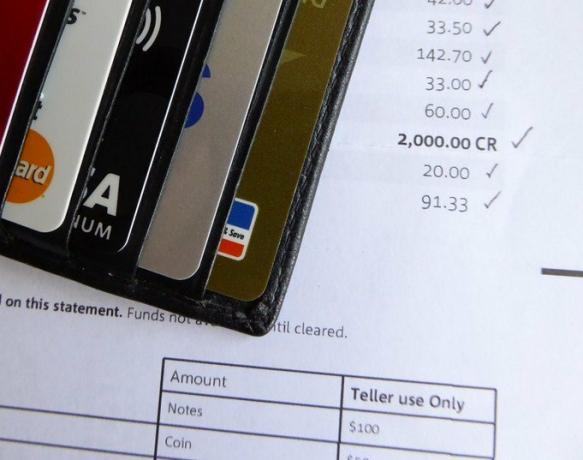The balance sheet It is part of a group of informative documents that expose the financial situation and other useful information for the company to obtain an overview of its financial performance.
In this article you will find:
What is the financial balance?
It is the financial report of a certain company at a given time. Through this, the owners can access information that is essential for their business, and also the management has support to undertake decision-making.
Advertisements
Said report reflects the assets (everything that the organization owns), the Passives (acquired debts) and the difference between them corresponds to the net worth (). Therefore, it is a kind of X-ray carried out in monetary terms, which reflects the accounting situation of the company, the money available and the course of its debts on a certain date.
Its elaboration is annual, that is, it is done once a year, coinciding with the culmination of the company's financial year, although sometimes balance sheets are prepared at the beginning of the financial year known as opening balances and others that are carried out monthly, every three months or every six months, called balances partial.

Advertisements
Steps to take a balance sheet
For the importance that the document represents, it is something really simple to prepare, they are presented in separating two columns, the column on the left are the Assets must be ordered according to their liquidity and liabilities are listed in the column on the right, they are ordered according to their requirement.
1.- Register of current assets.
Advertisements
It is the first step to carry out a balance sheet, the amounts of the accounts associated with the current assets or current, including:
- Accounts receivable.
- Bank balances.
2.- Identify the fixed assets.
Advertisements
After obtaining the current assetsFixed assets must be classified and accounted for, which generally do not show constant changes during the period, otherwise current assets, which are quite dynamic. The following accounts fall into this classification:
- Production machinery and equipment.
- Transport components.
- Office furniture and equipment.
- Computational components.
- Buildings, land, etc.
3.- Make the sum of the total assets.
Advertisements
The total assets can be obtained with the sum of fixed assets and current assets, both items will give a final result.
4.- It is necessary to account for all current liabilities
Liabilities are recorded here (debts and obligations acquired by the company). The first category that must be taken into account are current liabilities, which would be the minor debts corresponding to that year, including:
- Bank obligations and commitments.
- Accounts payable to suppliers.
- Advances to clients.
- Accounts payable to creditors.
- Taxes pending payment.
5.- Registration of fixed liabilities.
It is time to register the so-called fixed liabilities, which are nothing more than the obligations that the company has contracted and have an exaction greater than one year, they can be:
- Bank credits or financing.
- Documentation to pay.
6.- Add the total liabilities.
At the time of having the amounts of current and fixed liabilities, both categories must be totalized to get the final amount of liabilities.
7.- Obtain the total amount by entering the amounts in the capital account.
So far you have accounted for the tangible and intangible properties of the company, on the other hand, the debts and obligations it owns. Now is the time to register the capital with which the company is operating, that is, those resources in which the shareholders have invested.
8.- Adding total liabilities, with the total capital.
After totalizing the capital, you must attach another line, in which the sum of the total liabilities with the total capital will be reflected. The amount obtained shows us the means or economic resources that the company can have to bear the assets.
9.- Check that the result of the sum of liabilities, with the capital corresponds to the total of assets.
It is the last necessary step when making a balance sheet, you must make the comparison of the sum of total assets, with the sum of total liabilities, plus capital. We must have an equal result, this phenomenon constitutes the proof that said balance is carried out correctly and the accounting equation is respected.
Importance of the balance sheet
The importance of said financial report lies in its objectives, including the main purpose for which this balance is prepared, which undoubtedly is to make known the financial position of the company in a period of time determined.
With the completion of this report, the company can obtain important and necessary information for the decision making, either from general management, a specific business, or with ways of improvement, growth or changes.
Among the information provided by this report, which is important for the company to know and thus detect if they are doing good business is:
- Nature and scope of assets and obligations.
- Current capital capacity.
- Business liquidity.
- Surplus or insufficient cash, in bank accounts or investments.
- Surplus or shortage of inventories due to poor purchase planning.
- Excessive amounts in accounts receivable, product of high credit sales and poor collection work.
- Accumulation of contracted debts, especially in the long term.
Finally, it is also important since it represents a very useful resource, where third parties can know the economic and financial status of the company for various purposes.
As is the case of banks that need to know the state of the entity before deciding to grant them a loan or not. For suppliers that dispatch merchandise on credit in stipulated terms and need to know the company's payment capacity before making the loans.
Its presentation is also important for the calculation and collection of taxes, which are usually based on much of the information contained in the balance sheet. In this and any of the cases it is important and fundamental that the information contained therein is truthful, clear and sincere in order to avoid major inconveniences.


